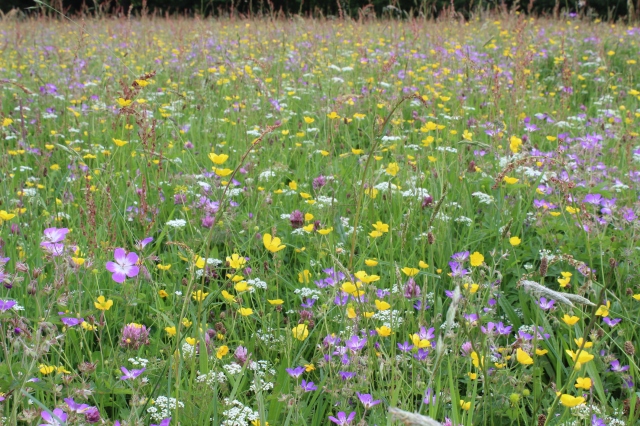autor Anton Zolotarjov
autor Anton Zolotarjov
autor Linda-Liisa Veromann-Jürgenson
autor Kersti Püssa
autor Anton Zolotarjov
autor Anton Zolotarjov
autor Linda-Liisa Veromann-Jürgenson
autor Kersti Püssa
Ecologists have long suspected that one key to explaining plant diversity lies with their enemies, including pathogenic soil microbes. Plant–soil feedback describes a process whereby plants shape the microbial communities living alongside them in the soil; and the microbes then have a ‘feedback’ effect on the performance of subsequent generations of plants. Feedback effects can be negative if driven by pathogenic microbes or positive if driven by beneficial microbes, such as mycorrhizal fungi. However, we remain largely in the dark about the mechanism involved, especially concerning the identity and diversity of microbes that could drive plant-soil feedbacks.
An international collaboration involving Dr John Davison (Ecolchange, University of Tartu) and led by Dr Marina Semchenko (University of Manchester, UK; formerly University of Tartu) has shed light on the drivers of plant-soil feedbacks in a study published in Science Advances. The team identified the microbes responsible for feedback effects and discovered why some plants live fast and die young whilst others have long and healthy lives. Their experiment consisted of a ‘conditioning phase’ where 14 different grassland plant species were grown for 3 years in field-based mesocosms containing natural grassland soil. The microbial communities in the soil were then described using high-throughput sequencing, and a ‘feedback’ experiment was conducted where plant species were grown on soil conditioned by the same or different species.
They found that the fungal communities present in conditioned soil varied considerably, with some plant species promoting different plant pathogenic fungi, and others favouring more beneficial fungi. The balance between pathogenic and beneficial fungi was dependent on plant functional traits and soil characteristics. Plants with more nutrient-acquisitive traits attracted more diverse communities of pathogenic fungi and associated with fewer mycorrhizal fungi. Soil microbial communities inhabiting fertile soils were more conducive to antagonistic interactions with plants, and plants were more susceptible to pathogens when grown on fertile soils. In the feedback stage, plant performance was negatively related to the diversity of harmful fungi rather than to the abundance of any particular specialist pathogens. It was also positively related to the diversity of mycorrhizal fungi. Lead author, Dr. Semchenko said: “We found that plant growth is strongly controlled by how many different harmful and beneficial fungi are attracted to plant roots. Some plants are slow to grow but enjoy a long life by cooperating with beneficial fungi; others grow fast and are initially successful, but then they are brought down by diseases caused by harmful fungi.”
The results could pave the way for new approaches in agriculture to achieve the right microbial balance for the production of healthy crops. The study also helps us understand how plant diversity is maintained. This, in turn, could help improve nature conservation and natural habitat restoration. Richard Bardgett, Professor of Ecology at The University of Manchester, said: “While these results come from grasslands in northern England, it is likely that the same mechanisms occur in other ecosystems around the world.” Dr. Semchenko added: “Soil microbes are known to be sensitive to human interference, such as intensive agriculture, and our findings suggest that negative impacts on soil microbes may have knock-on effects on the conservation of plant diversity.”
The study involved a collaboration between nine institutions including the Universities of Berlin, Colorado, Edinburgh, Lancaster, Manchester and Tartu.
Citation: Semchenko, M., Leff, J. W., Lozano, Y. M., Saar, S., Davison, J., Wilkinson, A., … & Mason, K. E. (2018). Fungal diversity regulates plant-soil feedbacks in temperate grassland. Science Advances, 4(11), eaau4578. (link to full paper)

Fungal diversity may be key to the maintenance of plant diversity in grasslands
Abstract:
Feedbacks between plants and soil microbial communities play an important role in vegetation dynamics, but the underlying mechanisms remain unresolved. Here, we show that the diversity of putative pathogenic, mycorrhizal, and saprotrophic fungi is a primary regulator of plant-soil feedbacks across a broad range of temperate grassland plant species. We show that plant species with resource-acquisitive traits, such as high shoot nitrogen concentrations and thin roots, attract diverse communities of putative fungal pathogens and specialist saprotrophs, and a lower diversity of mycorrhizal fungi, resulting in strong plant growth suppression on soil occupied by the same species. Moreover, soil properties modulate feedbacks with fertile soils, promoting antagonistic relationships between soil fungi and plants. This study advances our capacity to predict plant-soil feedbacks and vegetation dynamics by revealing fundamental links between soil properties, plant resource acquisition strategies, and the diversity of fungal guilds in soil.